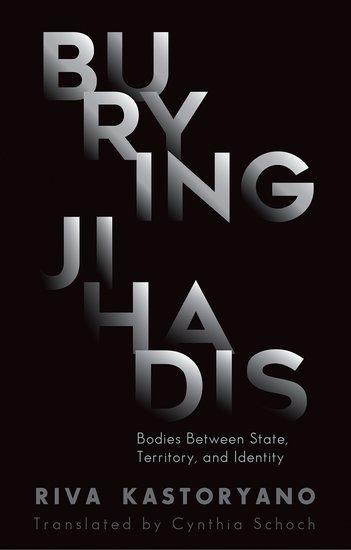 Burying Jihadis: Bodies Between State, Territory, and Identity, Riva Kastoryano, trans. Cynthia Schoch (New York: Oxford University Press, 2018), 288 pp., $39.95 cloth, $30.99 eBook.
Burying Jihadis: Bodies Between State, Territory, and Identity, Riva Kastoryano, trans. Cynthia Schoch (New York: Oxford University Press, 2018), 288 pp., $39.95 cloth, $30.99 eBook.
The past couple of years have seen debates surrounding the relationship between identity and sovereignty reignited, as illustrated by the resurgence of nationalist politics around the globe, and especially in the United States and Europe. These discussions highlight the importance of territory as a foundational element both for states and for citizens’ identities. In this international order, territory defines where states have jurisdiction to govern, to which state an individual belongs, and with what set of values, rights, and responsibilities individuals are imbued.
But what happens when defined states clash with undefined entities, and people devote their bodies, which are typically associated with a fixed citizenship, to a transnational cause? This is the central question that Riva Kastoryano explores in Burying Jihadis: Bodies Between State, Territory, and Identity. Through case studies of major terrorist attacks in New York, Madrid, and London, she first investigates how jihadis, who can originate from anywhere, come to identify as warriors for the ummah, the global “imagined community” of believers that transcends territorial bounds. She then details how states, in the aftermath of a terrorist attack, struggle to determine how and where to bury the jihadis’ bodies, a situation in which there is rarely a defined policy. Burying Jihadis illustrates the tension between territorial states and globalized networks, and how jihadi bodies, which are used as weapons against states while still alive, can later reaffirm state sovereignty after death.
The three attacks each illustrate different circumstances that further complicate this picture. The September 11 attacks were carried out by men from all over the globe who successfully coordinated their assault on the United States from abroad. The perpetrators of the 2004 Madrid train bombings were first-generation Spaniards who maintained strong ties to Morocco. The group behind the 7/7 attacks in London was comprised of both natural-born and naturalized English citizens who were radicalized at home. Despite their different backgrounds and ties to the state, all these men shared a common identity as jihadis. This makes the question of burial particularly challenging for governments, who must grapple with competing concerns, such as whether the body should be buried in-country, whether it can be repatriated, whether the perpetrator deserves funeral rites, and whether the burial site will become a shrine for sympathizers.
Kastoryano’s discussion of identity, territory, and sovereignty, while extremely detailed, also leaves some questions to be answered. While she focuses on the ummah as a network, to what extent does her framework apply to networks that are not as organized or goal oriented? This question is particularly important to consider given the recent attacks in Tallahassee and Toronto by two men who were self-described “incels” or “involuntary celibates.” Moreover, in an era where states seem to be re-hardening their borders through tougher immigration and nationalist policies, how might these dynamics change? Although the book gives no clear recommendations for policymakers and is sometimes ambiguous about the relationships it tries to establish, Burying Jihadis offers a unique perspective on the tensions that exist between identity and state sovereignty for an international system that is simultaneously globalizing in some realms and retreating in others.